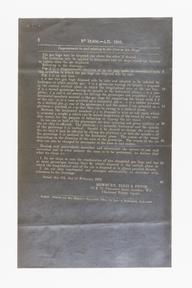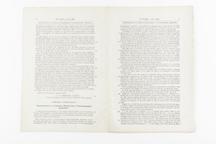

Debrie Sept 35mm cine camera
- PART OF:
- The Kodak Museum Collection




Debrie Sept cine camera for 35mm film in 10' loading chargers. Fitted with a Paris 'Huet' lens F: 5cm f/ 3.5-32, Serial No 1825, Detachable clockwork motor, rounded case, 'normal' and 'rapid' speed. With provision for single exposure T/I. Brilliant reflex finder. Front lens slides out to form optical frame finder. Helical focusing mount. Intermittent front sprocket drive. Light trapped slits for use as printer/ projector. Frame counter. Serial No E 00423. Andre Debrie. French Patent 2 June 1919. In lined case with four spare chargers.
Debrie Sept 35mm cine camera, made by André Debrie in 1921.
Fitted with a Paris 'Huet' lens F: 5cm f/ 3.5-32, Serial No 1825, Detachable clockwork motor, rounded case, 'normal' and 'rapid' speed. With provision for single exposure T/I. Brilliant reflex finder. Front lens slides out to form optical frame finder. Helical focusing mount. Intermittent front sprocket drive. Light trapped slits for use as printer/ projector. Frame counter. Serial No E 00423. Andre Debrie. French Patent 2 June 1919. In lined case with four spare chargers.
The Debrie Sept could be used to take still pictures as well as cine sequences. It could also be used as a movie projector or enlarger with the addition of a lamp house, and a printer. The chase sequence in ‘Robin Hood’ (Douglas Fairbanks, 1922) was shot using a Debrie Sept.
The camera used 35mm film sold in five metre rolls, sufficient only for 17 seconds’ filming. The film containers have light traps opened from the camera exterior. It has a detachable clockwork motor unit, square-ended, that drives an intermittent sprocket transport. The camera has a Zeiss Tessar f/3.5-32 50mm lens in a focussing helical threaded mount.
Details
- Category:
- Cinematography
- Collection:
- Kodak Collection
- Object Number:
- 1990-5036/3167
- Materials:
- glass, metal (unknown) and leather
- Measurements:
-
overall: 200 mm x 120 mm x 100 mm,
- type:
- cine camera
- credit:
- The Kodak Collection at the National Media Museum, Bradford




